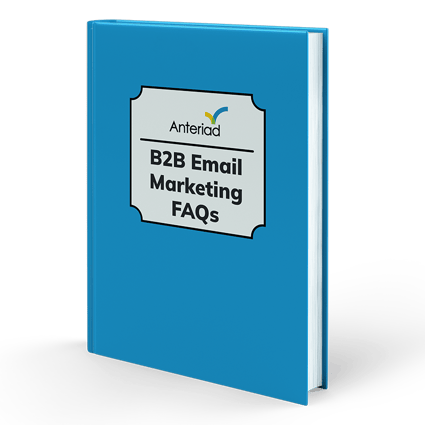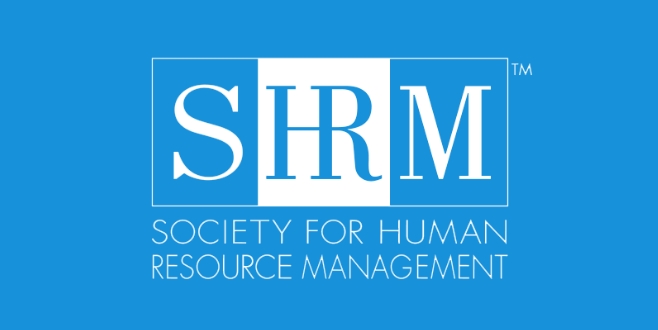B2B Email Marketing FAQs
Email marketing isn’t new, but it continues to be a critical tool in B2B marketing—when done right. It remains one of the most effective ways to engage prospects and customers, with personalization, strategic targeting, execution, and campaign orchestration as the gold standard for driving deeper connections and maximizing impact.
To help you navigate the complexities of compliance, deliverability, design, and optimization, we’ve compiled this essential FAQ.

B2B email marketing can take many forms, from prospecting emails sent to engage new potential customers to client emails aimed at strengthening relationships and driving retention. Each type serves a distinct purpose and requires different strategies. This guide will help you navigate the nuances of both approaches—so you can maximize impact, whether reaching new prospects or engaging existing customers.
This guide outlines best practices in email marketing, but regulations change and audience responses vary. Anteriad does not guarantee specific results, but we hope it provides a useful foundation for your strategy. For the latest in email marketing best practices and compliance, partner with Anteriad to ensure your campaigns stay effective and aligned with evolving regulations.
Why Email Marketing Matters for B2B
Email marketing isn’t just widely used—it’s a strategic tool that enhances engagement, strengthens brand positioning, and drives pipeline growth. When combined with Anteriad’s high-fidelity data and advanced analytics, email campaigns become even more precise and effective.
- Strategic audience engagement: Anteriad’s data-driven approach helps brands tailor email content to align with prospects' current interests. The Society for Human Resource Management (SHRM) leveraged precision targeting in their email campaigns to achieve a4:1 ROI in acquiring new members.
- Aligning with buyer intent: Understanding where a prospect is in their journey allows marketers to deliver relevant, timely content. Lenovo's data-driven email campaigns leveraged insights into buying behavior, resulting in a 32x ROI and a 20% increase in leads by reaching prospects when they were actively researching solutions.
- Optimizing conversions through predictive insights: Email plays a crucial role in prioritizing high-intent prospects, ensuring that sales teams focus their efforts on the most promising leads. OpenText improved inquiry-to-MQL conversion by 25% and MQL-to-SQL conversion by 30% by integrating predictive insights into their email marketing strategy, making outreach more efficient and results-driven.
Email marketing nurtures leads through personalized messaging, automated workflows, and targeted campaigns. It moves prospects efficiently through the sales funnel while providing valuable engagement metrics to optimize future outreach efforts. Here are examples of how working with Anteriad on email strategy and execution, helped businesses impact lead generation and sales in crucial buying stages.
- Consideration stage: By leveraging Anteriad’s data, you can pinpoint prospects actively researching solutions, enabling highly personalized email outreach. Lenovo's data-driven email campaigns resulted in a 32x ROI and a 20% increase in leads.
- Conversion stage: Email campaigns powered by Anteriad’s data help prioritize high-intent prospects, increasing conversion rates. OpenText improved inquiry-to-MQL conversion by 25% and MQL-to-SQL conversion by 30% by leveraging Anteriad’s predictive insights.
- Personalization and segmentation: Deliver tailored messages based on audience behavior and preferences.
- Cost efficiency: Email marketing is a cost-effective way to engage B2B audiences and helps drive efficiencies across campaigns by reinforcing messaging and increasing audience engagement.
- Data-driven insights: Track open rates, click-throughs, and conversions for campaign optimization. You can also see what content the audience is engaging with.
- Scalability: Easily reach large B2B audiences while maintaining customization.
B2B email marketing can generally be divided into two key categories:
-
Prospecting emails: These emails are designed to introduce your brand to new potential customers. They often include educational content, thought leadership, or offers to spark interest and engagement. Deliverability and compliance are especially critical here.
-
Client & Nurture emails: These emails are sent to known contacts—existing customers, leads, or engaged prospects—to build relationships, provide value, and drive ongoing engagement. These can include newsletters, product updates, or personalized recommendations.
Each type of email plays a role in a full-funnel marketing strategy, and balancing them appropriately is key to success.
Audience Segmentation & Targeting
Effective segmentation strategies include:
- Firmographic Segmentation: Segment by industry, company size, revenue, or location.
- Behavioral Segmentation: Target based on past interactions, website visits, and previous email engagement.
- Intent-Based Segmentation: Use predictive data to engage prospects showing buying signals.
- Lifecycle Segmentation: Adjust messaging for new leads, active prospects, and dormant contacts.
-
Ideal Customer Profile (ICP) Segmentation: Focus on accounts that align with your best-fit customer characteristics, ensuring high-value prospects receive targeted messaging.
-
Buying Group Role Segmentation: Customize emails based on decision-makers, influencers, or end-users within an account to ensure relevant messaging for each stakeholder.
Intent data helps identify prospects who are actively researching relevant topics, allowing marketers to send timely, highly relevant emails. By incorporating intent signals, brands can:
- Improve targeting: Reach decision-makers when they are most engaged.
- Boost engagement: Deliver messaging that aligns with real-time buyer interests. Lenovo’s intent-driven email campaigns resulted in a 32x ROI and a 20% increase in leads by targeting prospects actively researching relevant solutions.
- Enhance lead conversion: Prioritize high-intent prospects, increasing conversion rates. OpenText improvedinquiry-to-MQL conversion by 25% and MQL-to-SQL conversion by 30% by leveraging intent insights.
- Improve targeting: Reach decision-makers when they are most engaged.
- Boost engagement: Deliver messaging that aligns with real-time buyer interests.
- Enhance lead conversion: Prioritize high-intent prospects, increasing conversion rates.
Companies like Lenovo and OpenText have leveraged intent-driven email campaigns to achieve substantial ROI, proving the value of aligning email outreach with real buyer signals.
Data is at the core of everything we do. We partner with B2B brands, leverage high-quality B2B data, and identify precise audience groups to target. We leverage intent data, engagement trends, and firmographic insights to create and execute highly targeted email campaigns that drive results—while adhering to strict data privacy regulations and best practices.
Anteriad's best practices for email compliance and performance:
-
Compliance first: Strict adherence to CAN-SPAM and GDPR.
-
Advanced hygiene: Scrub addresses to remove spam traps and complainers.
-
Optimized deliverability: Authenticated and pre-warmed domains.
-
Reputation monitoring: Daily tracking to maintain strong domain health.
-
Transparent reporting: Real-time analytics to track performance.

Delivering 4:1 ROA
See how SHRM transformed its marketing with an email-first, multichannel strategy—boosting engagement, cutting costs, and driving a 4:1 return on ad spend. Anteriad’s data-driven approach helped personalize content and optimize budget allocation.
Email Compliance & Deliverability
CAN-SPAM refers to a U.S. law that sets rules for commercial email, establishes requirements for senders, gives recipients the right to opt out, and outlines penalties for violations. Compliance ensures that marketing emails maintain transparency, respect user preferences, and avoid deceptive practices.
It primarily applies to emails sent to recipients in the United States, but similar regulations exist in other regions, such as GDPR in the European Union and CASL in Canada. If you send emails internationally, be sure to review the specific guidelines for each country to ensure compliance.
Best practices include maintaining list hygiene, using a sound email infrastructure, handling bounces properly, and avoiding overly promotional language, all caps or excessive punctuation. Also, think about keeping your email balanced between text, images and links; limit the number of links and avoid using too many images to avoid getting flagged.
Email authentication and sender reputation are critical for high deliverability. Using authenticated domains with SPF, DKIM, and DMARC verifies your sender legitimacy, reducing the risk of spoofing and phishing attempts. Additionally, warming up domains by gradually increasing email volume helps establish a positive sender reputation, improving inbox placement. Regularly cleaning your email list, monitoring engagement metrics, and maintaining a healthy balance of text and images in your content will also strengthen deliverability and performance.
Email Design & Copywriting
Ensuring your emails are mobile-friendly and easy to scan improves engagement and readability. Best practices include:
-
Keep copy concise: Aim for 50 to 125 words per section.
-
Use simple fonts: Standard, legible fonts work best across devices.
-
Optimize CTAs: Keep them between 2 to 5 words and place the primary CTA above the first scroll.
-
Use single-column designs: This layout ensures readability on mobile screens.
-
Limit colors: Stick to a simple, on-brand color scheme to maintain a professional look.
-
Create action-driven CTAs: Make them specific, action-oriented, urgent, and clear about the next step.
Keep it under 35 characters, include relevant keywords, and consider using an emoji for personalization (when appropriate). Also, try to create a sense of urgency without using overly salesy language. Consider the recipient's perspective:
-
How will this email provide value to the recipient?
-
Is the content relevant and helpful for their role or challenges?
-
What would make them want to engage with this email?
Stay within 40-100 characters, summarize the email content without repeating the subject line, and include a clear call to action.
Email Performance & Optimization
Not entirely. Email privacy features (like Apple’s Mail Privacy Protection) have made open rates less reliable. Click-through rates and conversions are better indicators of engagement.
Studies suggest sending emails between 9 AM – 12 PM on weekdays, with Tuesday often being the best day. However, A/B testing is the best way to determine your audience’s preference.
Partnering with an Email Marketing Provider
Working with a provider like Anteriad can help streamline your email marketing efforts, ensuring compliance, better deliverability, and optimized campaign performance. A managed service provider brings expertise, dedicated infrastructure, and access to high-quality data to enhance your outreach. A specialized email marketing provider, like Anteriad, helps simplify your entire email process. Instead of juggling everything internally, you’ll get compliance handled, better inbox placement, smarter audience targeting, and strategic insights that translate directly into stronger results. Think less stress, more ROI, and a partner who knows how to move the needle.
Key factors include:
- Compliance & security: The provider should follow CAN-SPAM, GDPR, and other relevant regulations.
- Deliverability expertise: They should have a strong reputation for avoiding spam traps and managing sender reputation.
- Audience targeting capabilities: Look for robust segmentation, firmographic targeting, and intent-based data. Look for providers that don’t just offer lists but can deliver precise targeting with robust segmentation, intent-driven insights, and detailed firmographics. You want data that predicts buyer behavior, not just reports it.
- Campaign orchestration: Choose a provider that can integrate email with other marketing programs—such as content syndication and paid media—using the same audience to create a seamless, multi-channel engagement strategy.
- Advanced reporting & optimization: Detailed analytics and A/B testing support are crucial for refining strategy.
- Integration with marketing tools: Ensure compatibility with your CRM, automation platforms, and data management systems.
- Dedicated support and strategic guidance: Don’t underestimate the value of great support. Choose a provider who offers strategic guidance and proactive recommendations, backed by experts who understand your business objectives and can advise on best practices to drive sustained success.
Final Tip: Monitor, Optimize, and Iterate
B2B email marketing success comes from consistent testing and improvement. Track your key metrics, refine your approach, and stay compliant to ensure high engagement and deliverability.
Need more insights? Contact Anteriad to learn how we can enhance your B2B email marketing strategy!
